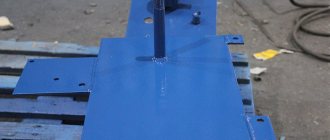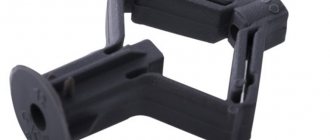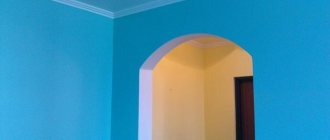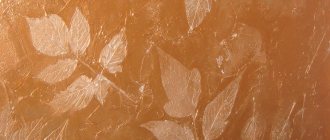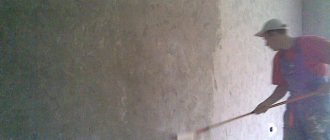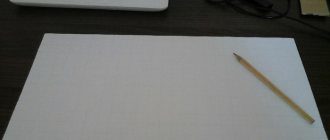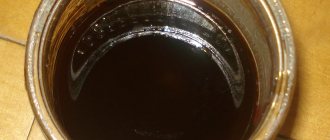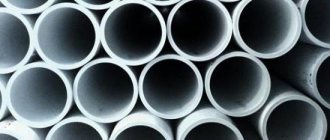Loud sounds are an eternal problem for citizens and residents of apartment buildings, so owners do not always have the opportunity to carry out complex reconstruction of walls or create additional protective structures.
To protect against noise, you can use special acoustic plaster, which just needs to be applied to the surface in an even layer, observing all the rules for such use.
Let's find out how to do this and due to what properties plaster can solve the noise problem .
Extraneous noise has always been considered the main cause of discomfort during rest. In your own apartment, you may be disturbed by loud neighbors, noise coming from the streets, the sounds of repair work behind the wall or outside the window, the screams of children on the playground and many other sounds that cannot always be eliminated quickly and easily.
Disturbing sounds can overtake you not only at home, but also in the office, and this will negatively affect the quality of work of all employees. At the moment, quite a lot of ways have been invented to solve the problem of extraneous noise, but almost all of them involve the installation of special structures or the installation of insulating materials on the wall.
The fastest way to soundproof walls in an apartment is to apply special plaster to the wall, which can absorb up to 50% of all noise occurring outside the apartment , office or public institution.
Providing sound insulation with plaster in public areas
In some public establishments, noise protection becomes the most important task, since they are intended to provide relaxation and comfortable silence for visitors. In restaurants , where sounds from the street are not heard, in theaters and cinemas , where during the screening of films and performances you cannot hear what is happening outside the hall, special acoustic soundproofing plaster is used everywhere, which reliably absorbs noise arising from the outside.
Where else is this type of plaster used? Using this finishing method, the following public places :
- restaurants, cafes, catering centers;
- office centers, conference rooms;
- libraries, thematic clubs and sections, reading rooms;
- courthouses, counseling centers;
- production establishments located near the residential sector.
Considering that even such large rooms are reliably protected from noise with the help of plaster, there is no doubt that in your home it is possible to easily and quickly create a comfortable environment that will not be disturbed by loud sounds.
The insulating properties of such plaster are ensured due to the special composition of this material . Soundproofing plaster consists of lightweight fillers, which are divided into small granules measuring about 5 mm. crushed pumice, vermiculite or expanded clay are used for these purposes . Due to the hollow structure, the light weight and density of such material is ensured.
Quite often, when creating plaster for sound insulation, aluminum powder is also used . During the drying process, gas escapes from such a powder, providing greater porosity. Thanks to the loose and textured internal structure, the sound is weakened and lost in the plaster, repelled by small particles. As a result, extraneous noise does not reach the room, since it is completely muffled inside the plaster .
In order for the soundproofing plaster not to lose its protective properties, it is not advisable to paint such a wall with thick paints, for example, enamel . Due to their thickness, such paints and varnishes will penetrate into the pores and clog them, so the sound cannot be muffled in the porous structure of the plaster. It is also undesirable to glue wallpaper onto such plaster , since glue applied to the surface can also interfere with noise insulation.
Original decorative ceiling plaster: read about the types, properties and advantages, also in detail about the technology for applying such plaster.
Read in this article how to paint a ceiling with acrylic paint: detailed instructions for painting the ceiling, tips, videos.
Areas of application
Insulating materials can be used to protect buildings of various types - not only residential, but also for technical purposes. Insulation can protect the room from excessive humidity, electric current and noise exposure.
Moisture protection
The issue of waterproofing is one of those problems that can be solved with the help of paint and varnish material. It should be noted that most paints, one way or another, have waterproofing properties. However, if you need truly serious protection, you cannot do without a special coating. After coating with this composition, the surface will withstand even direct exposure to water for a long time.
Waterproofing coatings must have certain qualities:
- The paint should be intended for both interior work and facade finishing, since double-sided painting provides more reliable protection.
- It is desirable that, in addition to moisture resistance, the paintwork material is resistant to ultraviolet rays and temperature changes.
- The composition should include anti-salt additives and antifungal drugs. Antiseptic qualities are very important for good waterproofing, because moistened material is an ideal place for the development of mold and mildew.
Note! The quality of the paint and varnish material is influenced not only by its shelf life, but also by storage conditions. The paint should not be placed in areas that are too cold (at sub-zero temperatures) or too hot. Information on storage times and conditions can be found on the product packaging.
Noise insulation
An increased level of sound insulation can be achieved by painting the surface with special paint. Soundproofing coatings have a number of characteristic features:
- The basis of this type of paint is bitumen or an acrylic composite element. Both substances have a number of features: acrylic is better suited for interior work, since it is practically odorless (water-based), and bitumen is much more effective outdoors, but is not suitable for indoors, as it smells unpleasant. At the same time, bitumen coatings are much cheaper than acrylic ones, which is important when painting large areas.
- The maximum level of sound insulation can be obtained if the composition is applied in a thick layer. It is recommended to use a brush or roller as a working tool. The paint dissolves in a synthetic composition.
- For insulating moving elements (for example, machine or car parts), bitumen-based paints and varnishes are best suited. This group of paints is capable of absorbing not only sounds, but also vibrations.
Soundproofing an apartment with plaster
It is extremely important to ensure sound insulation in the apartment, because this is where you will relax, and noisy neighbors can prevent you from relaxing. This is especially true for houses with dense walls, since excessive density contributes to a high degree of noise penetration .
Please note that plaster with soundproofing properties does not harm health , so this method of protection is suitable even for a child’s room. And thanks to the ability to create an original relief surface, it is not at all necessary to apply decorative finishing materials to the layer of plaster, since even the plaster itself can be decorated in accordance with the style of the room.
Plaster with soundproofing properties is highly popular due to its practicality and versatility. And it is quite expected that the championship in this popularity belongs to Knauf soundproofing plaster.
Application of acoustic plaster: main steps
As with any finishing work, the initial stage in the process of applying plaster to a wall should be surface preparation . The wall is leveled, cleared of foreign materials, and then primed using a special solution of cement and sand.
Once the soil is almost dry, you can begin applying plaster. Make sure that the layer is even and uniform , and its thickness does not exceed 2-2.5 cm.
If the work is completed before the entire wall is covered with acoustic soundproofing plaster, make the edge a third thinner than the entire layer: this will make it easier to continue working, applying a new mixture overlapping . If you leave an even layer on the edge of the layer, then when you subsequently apply the plaster, seams will appear that will be noticeable.
In addition to paint, you can use fabric or wooden lattice to decorate such walls.
Despite the fact that soundproofing plaster is considered a justified way to protect against noise, it cannot always protect against excessively loud sounds .
If there is a risk of such noise in your home, it is advisable to combine acoustic plaster with other soundproofing materials.
See a selection of photos of glass partitions in the apartment - all the secrets and subtleties of the technology are described in detail.
Read here about the use of wall-mounted vertical heating radiators.
With proper preparation of the surface, compliance with all conditions for applying and using plaster, you can forget about the problem of extraneous noise and create not only a cozy, but also a beautiful environment in the room.
Sometimes living in apartment buildings can be quite difficult due to the frequent noise. Thin soundproofing of the walls in the apartment will help correct the situation.
You can do this work yourself, using modern materials widely available on the construction markets.
This article will discuss the types of sound insulation, their characteristics and the materials that will need to be used to create it.
Soundproofing materials
All materials for insulating an apartment from extraneous noise can be divided into 2 types:
Soundproofing is a barrier that prevents sound from entering or spreading through a room. Sound absorption, in turn, is carried out by converting sound energy into thermal energy and reducing its intensity.
Different materials are used for such procedures. For sound insulation, it is necessary to choose products with large mass and density, and sound absorption itself is carried out using soft and porous coatings.
The following options for sound-absorbing materials are available:
- Boards made from fiberglass or mineral wool. They have good protection efficiency, but at the same time they have a large thickness of 3 cm. They are installed inside plasterboard or gypsum fiber sheathing. Frameless soundproofing of walls will help to significantly reduce the noise level in the apartment.
- Covering made of foamed polyurethane. Fastening is done using glue; preliminary leveling of the surface is not required. The thickness of the product ranges from 3.5 to 10 cm, and the height – from 2 to 7 cm.
Fiberglass plates have a thickness of no more than 3 cm
- Liquid sound insulation. Despite the name, the operating principle of this material is based on sound insulation. The solution is applied in a layer of up to 3 cm; leveling is not necessary, since drywall or other decorative finishing will be installed on top.
- Cork sheets. The coating is decorative, but with a thickness of about 1 cm it can also be used to protect against noise.
A greater absorption effect can be achieved by using a crumb diameter of no more than 3 mm.
Other types of insulating paints
Among other types of paint and varnish insulators, thermal insulation and heat-insulating compounds should be distinguished.
Thermal insulating coatings are able to withstand heating to high temperatures without losing their qualities. Such paints are used for painting very hot surfaces (fireplaces, stoves, etc.).
Thermal insulating coatings are used to reflect heat from the surface. Due to the formation of a special film, a shielding coating is created, so the room will not be as hot as it could be.
Liquid sound insulation
Liquid sound insulation of walls is carried out by spraying polyurethane foam. This material has good sound insulation properties. The liquid mixture for walls fills almost any hole, while creating a layer of monolith that prevents the penetration of unnecessary sounds. After hardening, the foam does not have much weight, so there will be no unnecessary load on the coating.
Liquid sound insulation of the walls in the apartment will also protect against rodents and many insects. The polymer can be applied without preliminary preparation; the construction of a frame is also not required. During operation, a minimal amount of contamination is generated. The service life of the foam is extremely high; the coating can last up to 50 years. For more information about finishing walls with polyurethane foam, watch this video:
The only disadvantage of this method is the need to use a professional tool. There is no particular point in purchasing it; the best option is to call a specialist. The cost of such treatment is approximately 1500-2000 rubles for 1 m².
In the following table you can see the sound absorption rates of various materials.
Advantages of liquid sound insulation
Liquid sound insulation solution has the following advantages:
- After treatment, the wall acquires excellent heat and sound insulation properties. This will not only get rid of extraneous noise, but also save on heating.
- The polymer is able to penetrate into the smallest cracks, which will allow you to process openings in doors and windows. This procedure, in addition to soundproofing, will help you forget about drafts.
- High adhesion to surface. There is no need to install the lathing; the polymer can also be applied to the ceiling without prior preparation. After work, a minimal amount of contamination is formed.
- Possibility of complete sealing of the room. After processing, a monolithic layer is created that will fill all the holes between the structures.
- Lightness of the material. The hardened foam has minimal weight, so there will be no load on the load-bearing elements of the home.
- Thanks to its structure consisting of small cells, sound insulation allows you to suppress sound waves over a wide range.
Types of polyurethane foam for liquid sound insulation
There are quite a large number of varieties of polyurethane foam.
This material is manufactured in different countries, the types differ in their effectiveness and, of course, cost.
The most common options are the following:
- Synthesia polyurethane foam. Produced in Spain. The main advantages include reasonable cost, environmental friendliness and the ability to use at any time of the year at any temperature.
- Ecotermix. Manufactured by China together with Russia. The material has a high level of fire resistance and is able to provide protection against the formation of mold, mildew and other bacteria. The cost of such products compares favorably with its main competitors.
- Demilec polyurethane foam. Manufactured in the USA and belongs to premium soundproofing materials. It is the highest quality and most reliable solution for protection against extraneous noise. The only drawback is the high cost, but you have to pay extra for quality.
- Bayer polyurethane foam. It is a reliable solution from a German brand. The product quality is at an acceptable level; spraying is carried out using a special device. For more information about the components for the production of polyurethane foam, watch this video:
- Thermal insulation compounds are still not widespread, but every year they become more and more popular. Once applied, they create a film that can reflect heat and serve as a kind of screen.
Electrical insulating compounds
To protect against current, special paints with electrical insulating properties are produced. The cost of such coatings is quite high, but the importance of electrical insulation is also great, since the safety of residents depends on it. The main qualities of electrical insulating paints (in addition to the main one - protection against current) are durability and resistance to other negative environmental influences (ultraviolet radiation, moisture, temperature changes, etc.).
There are different brands of electrical insulating compounds on the market, the most common of which are:
- EP-969 is intended for painting metal pipelines. The enamel is heat resistant and can withstand temperatures up to 150 degrees above zero.
- EP-919 is used for processing a variety of metal surfaces. A characteristic feature of EP-919 is its high anti-corrosion qualities.
- GF-92 and EP-9111 are most often used for painting windings on electrical equipment.
Note! Applying an electrical insulating coating is too important a task to do it yourself without experience. It is better to entrust such work to specialists.
